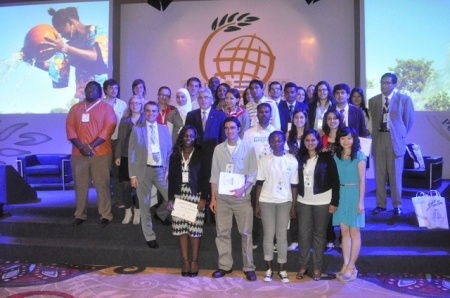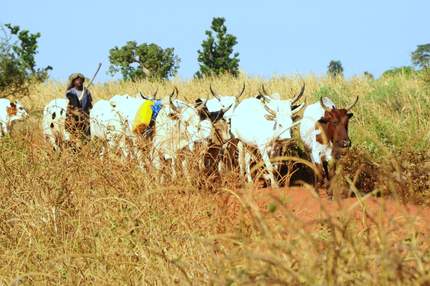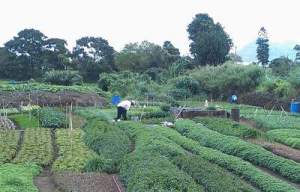
Members of the GCARD2 social media team receive their certificates from Uruguay’s Minister of Agriculture, Sunday.
The opening ceremony of the second Global Conference on Agricultural Research for Development (GCARD2) took place on 28th October 2012 at the Conrad Hotel in Punta del Este, Uruguay.
Over 700 participants from around the world were present and came to discuss and share experiences on the 3 themes of the conference: Foresight, Partnerships and capacity building. The main issue to be addressed here is how to innovate and have high quality research so that the results help improve the livelihoods of smallholder farmers?
Present at the opening ceremony of the conference were the GFAR Chair, Monty Jones, CGIAR Consortium Board Chair, Mr. Carlos Perez del Castillo, the President of IFAD, Kanayo Nwanze, and H.E Minister of Livestock, Agriculture and Fisheries, Mr. Tabaré Aguerre.
In his speech, Mr. Monty Jones introduced the 3 themes of the conference and highlighted that Uruguay is a good location for the GCARD2, since they have many best practice case studies to learn from when it comes to agriculture and involving smallholder farmers for agricultural development.
The CGIAR Consortium Board Chair, Mr. C.P.del Castillo shared with the audience the importance of research for agricultural development and gave examples from the work being done by CGIAR. According to him, climate change will have a significant impact on Agriculture and the CGIAR has undergone reform to adapt to the situation. The research being carried out by the CGIAR centres is being done collectively on a wide range of topics.
The speech of the chair of IFAD, Mr. Kanayo Nwanze, was very focused on the conference themes. He highlighted that 2 years ago, Agricultural development was not acknowledged at national, regional and international level, but today it is not the case anymore. Agriculture is the concern of every one of us. The President of IFAD said that today we have the interest, commitment and funding, but how do we seize the opportunity?
Climate change is is here and going to affect us, and the President of IFAD said that future research to be carried out should be focused on climate smart agriculture. To do so, there should be partnerships among different stakeholders. Mr. Nwanze believes that f we want a change, we need to work with the farmers in the field and it is there that the impact of research will be seen. And he ended his speech with a very interesting statement: “The day when no child dies from hunger and malnutrition, we will know our work has been done”!
The Minister of Livestock, Agriculture and Fisheries, Mr. Tabaré Aguerre gave an overview of Agriculture in Uruguay. He said that Uruguay is a net exporting country, while many countries in the world are net importers. But we have the same environment, challenges and opportunities. How has Uruguay been able to achieve success in its Agricultural sector?
In fact, the Uruguayan Agricultural strategy is based on competitiveness, social integration and natural resources policies, and we have a lot to learn from the country.
For the youth of the Social Media Team, it was a great privilege to receive their certificate for social media and social reporting from the hands of the Minister. As some said, it was a magical moment that will be engraved in our memories!
And talking about rewards and recognition to attract youth to agriculture, this is a concrete example of how young agriculture professionals from all over the world got the opportunity to cover the conference events and interact with the agriculture professionals present in Uruguay!
Blogpost by Nawsheen Hosenally, one of the GCARD2 Social Reporters.
Photo: Bernardo Thompson
Reblogged from the GCARD2 Blog : http://gcardblog.wordpress.com/2012/10/29/the-gcard2-social-media-team-receives-certificate-from-uruguays-minister-of-agriculture/#more-2315

